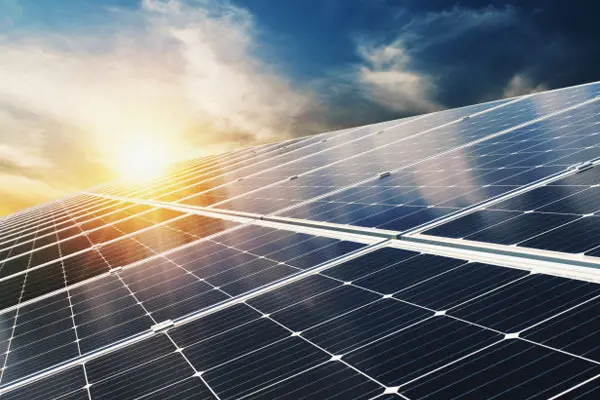Harnessing solar energy is a bright solution for those looking to break free from the constraints of traditional grid power.
By investing in photovoltaic (PV) panels and battery storage systems, individuals and businesses can create a self-sustaining source of electricity that is both reliable and renewable.
With advancements in technology continually driving down costs, going off-grid with solar energy has never been more accessible or appealing.
We will explore the benefits and considerations for harnessing solar energy, as well as provide actionable steps to take the first step towards a sustainable future.
Assess Your Energy Needs
Determine how much energy you need to power your home or business. This will help you determine the size and number of solar panels you need.
This involves measuring the amount of electricity your home or business consumes on a monthly basis.
You can do this by checking your past utility bills or by having an electrician measure your current electrical load.
Once you have this information, you can determine how much solar power you need to generate to meet your energy needs.
For example, if your home consumes 500 kWh of electricity per month, you’ll need a solar panel system that can produce at least that amount of energy.
The size and number of solar panels you need will depend on factors such as the size of your roof, the amount of sunlight your location receives, and the efficiency of the solar panels you choose.
It’s important to work with a qualified solar installer to ensure that you select the right size and number of panels for your specific needs.
Choose the Right Location
Select a location with enough sunlight to generate enough electricity. South-facing installations tend to be the most effective.
Choosing a location with sufficient sunlight is important for a successful solar panel installation.
South-facing installations tend to be the most effective as they receive direct sunlight for a longer period throughout the day.
This is because the sun’s rays strike the earth at an angle near 90 degrees at noon, providing the most abundant and consistent source of energy.
As a result, south-facing installations can generate more electricity than those facing other directions, making them an ideal choice for homeowners looking to maximize their energy output.
It’s important to consider other factors such as tree cover, building orientation, and elevation changes, which can all impact the amount of sunlight your solar panels receive.
By carefully selecting a location with ample sunlight, you can ensure that your solar panel system operates at its full potential and provides a reliable source of clean energy for your home.
Select a High-Quality Solar Panel System
Look for a system with high-efficiency panels, a durable inverter, and a robust mounting system.
When shopping for a solar panel system, it’s important to prioritize quality and durability to ensure optimal performance and longevity.
Look for a system with high-efficiency panels, a durable inverter, and a robust mounting system.
High-efficiency panels will provide more power per unit of surface area, reducing the number of panels required and saving you money in the long run.
A durable inverter, which converts DC power into AC power, will ensure consistent performance and minimize the need for replacements.
A robust mounting system will secure the panels and protect them from harsh weather conditions, such as high winds and heavy snowfall.
By investing in these three key components, you’ll be able to harness the power of the sun with confidence and maximize your return on investment.
Consider Battery Backup
If you want to store excess energy for use during the night or during periods of low sunlight, consider investing in a battery backup system.
If you want to store excess energy for use during the night or during periods of low sunlight, consider investing in a battery backup system.
A battery backup system allows you to store excess energy generated by your solar panels during the day, and use it to power your home during the night or during periods of low sunlight.
This is especially useful for households with high energy consumption, such as those with multiple electronic devices or large appliances.
With a battery backup system, you can ensure a consistent and reliable source of power for your home, even during periods of low sunlight or when the grid is down.
By investing in a battery backup system, you can also save money on your energy bills.
During periods of low sunlight, your solar panels may not be able to generate enough energy to meet your needs.
With a battery backup system, you can store excess energy during the day and use it to power your home at night or during periods of low sunlight, reducing your reliance on the grid and saving you money on your energy bills.
Many battery backup systems come with intelligent monitoring and control systems that can help you optimize your energy usage and save even more money on your energy bills.
When selecting a battery backup system, it’s important to consider the capacity of the battery, the duration of the backup, and the type of battery technology used.
Lead-acid batteries are the most common type of battery used in battery backup systems, but lithium-ion batteries are also becoming more popular due to their longer lifespan and higher energy density.
It’s also important to choose a battery backup system that is compatible with your solar panel system and is designed to meet your specific energy needs.
With the right battery backup system, you can ensure a reliable and consistent source of power for your home, even during periods of low sunlight or when the grid is down.
Monitor and Maintain Your System
Regularly monitor your system’s performance and perform maintenance tasks like cleaning the panels and checking the inverter.
To ensure that your solar panel system is running at its optimal level, it is important to regularly monitor its performance and perform necessary maintenance tasks.
One of the most important tasks is to clean the panels, as dirt and debris can significantly reduce their efficiency.
Dust and dirt can block the sunlight that the panels need to generate electricity, and if left unchecked, this can lead to a significant decrease in power output.
It is essential to check the inverter, which converts the DC power generated by the panels into AC power that can be used in your home.
Over time, the inverter may accumulate dirt and dust, which can cause it to overheat and potentially fail.
Regularly cleaning the panels and checking the inverter can help prevent these issues and ensure that your system is running at its maximum potential.
Utilize Energy Efficiency Measures
Implement energy-saving measures like LED lighting, energy-efficient appliances, and adjusting your usage patterns to maximize your solar energy production.
To maximize your solar energy production and reduce your reliance on the grid, consider implementing energy-saving measures such as LED lighting, energy-efficient appliances, and adjusting your usage patterns.
LED lighting is highly efficient and can help reduce your home’s energy consumption by up to 75%.
Look for Energy Star-certified lighting options, which use up to 75% less energy than traditional incandescent bulbs.
Consider replacing traditional incandescent lighting with LEDs in your outdoor spaces, as they use significantly less energy and last much longer than traditional bulbs.
When it comes to energy-efficient appliances, look for models that have the ENERGY STAR label, which indicates that they meet strict energy efficiency guidelines set by the U.S.
Environmental Protection Agency.
Some of the most energy-intensive appliances in your home include your refrigerator, washer and dryer, and dishwasher.
By upgrading to energy-efficient models, you can reduce your energy consumption and save money on your utility bills.
Adjusting your usage patterns is also a key component of maximizing your solar energy production.
Consider shifting your energy-intensive activities to the middle of the day, when your solar panels are producing the most energy.
For example, run your dishwasher and washing machine during the day, and delay using energy-intensive appliances like your oven and clothes dryer until the evening.
By adjusting your usage patterns, you can ensure that you’re using the most energy-intensive appliances during the times when your solar panels are producing the most energy.
By implementing these energy-saving measures, you can significantly reduce your reliance on the grid and maximize your solar energy production.
Not only will this help you save money on your utility bills, but it will also reduce your carbon footprint and contribute to a more sustainable future.
So take action today and start enjoying the benefits of solar energy in your home!]]}}The text highlights the importance of implementing energy-saving measures in conjunction with solar panel installation to maximize the production of solar energy.
The suggested measures include upgrading to energy-efficient appliances and adjusting usage patterns to align with the solar panels’ energy production.
By doing so, homeowners can reduce their reliance on the grid and save money on their utility bills while also contributing to a more sustainable future.
Upgrading to energy-efficient appliances can lead to significant energy savings over time.
Energy Star-rated appliances use at least 20% less energy than traditional models, and some appliances, such as LED light bulbs, can reduce energy consumption by up to 80%.
By replacing traditional incandescent bulbs with LED bulbs, homeowners can significantly reduce their energy consumption and lower their utility bills.
Adjusting usage patterns to align with the solar panels’ energy production can also lead to significant energy savings.
By using appliances and electronics during times when the solar panels are producing the most energy, such as during peak sunlight hours, homeowners can maximize the use of their solar energy production.
For example, doing laundry or washing dishes during peak sunlight hours can help reduce the amount of energy drawn from the grid.
Furthermore, implementing energy-saving measures can help homeowners save money on their utility bills.
According to the U.S. Department of Energy, a typical household can save up to $800 per year by upgrading to energy-efficient appliances and making simple changes like turning off lights and electronics when not in use.
By adopting these energy-saving measures, homeowners can maximize the benefits of their solar energy system while also reducing their carbon footprint.
Consider Grid Tie vs. Off-Grid
Decide whether you want to connect to the grid or go off-grid, depending on your location, energy needs, and budget.
When deciding whether to connect to the grid or go off-grid, there are several factors to consider based on your location, energy needs, and budget.
Your location plays a important role in determining the feasibility of connecting to the grid or going off-grid.
If you live in a remote area with limited access to electricity, going off-grid may be the only viable option.
On the other hand, if you live in a more urbanized area, connecting to the grid may be more practical and cost-effective.
Next, consider your energy needs and usage patterns.
If you have a high energy demand, such as for heating or cooling, connecting to the grid may be more suitable.
However, if your energy needs are modest, going off-grid with a renewable energy source such as solar or wind power may be a more cost-effective option.
Your budget is an important consideration.
Connecting to the grid can be more expensive, especially if you live in a remote area.
However, going off-grid can also be costly, as it requires investing in renewable energy sources and energy storage systems.
It’s essential to weigh the costs and benefits of both options and choose the one that best fits your needs and budget.
Ultimately, by considering your location, energy needs, and budget, you can make an informed decision about whether to connect to the grid or go off-grid.
Plan for Expansion
As your energy needs change over time, plan for expanding your solar energy system to accommodate increased demand.
As your energy needs evolve, it’s essential to think ahead and plan for future expansion of your solar energy system.
This proactive approach will ensure that your renewable energy supply keeps pace with your growing demand.
Whether you’re looking to power additional appliances, accommodate new residents, or simply offset increasing energy costs, an expandable solar energy system will provide the flexibility to meet your changing needs.
By considering your current and future energy needs, you can design and install a system that can be easily scaled up with the addition of more solar panels, batteries, or other components.
With this forward-thinking approach, you’ll be well-positioned to harness the full potential of solar energy and reduce your reliance on non-renewable sources.
Want More? Dive Deeper Here!
Hey there! If you’re the type who loves going down the rabbit hole of information (like we do), you’re in the right spot. We’ve pulled together some cool reads and resources that dive a bit deeper into the stuff we chat about on our site. Whether you’re just killing time or super into the topic, these picks might just be what you’re looking for. Happy reading!






